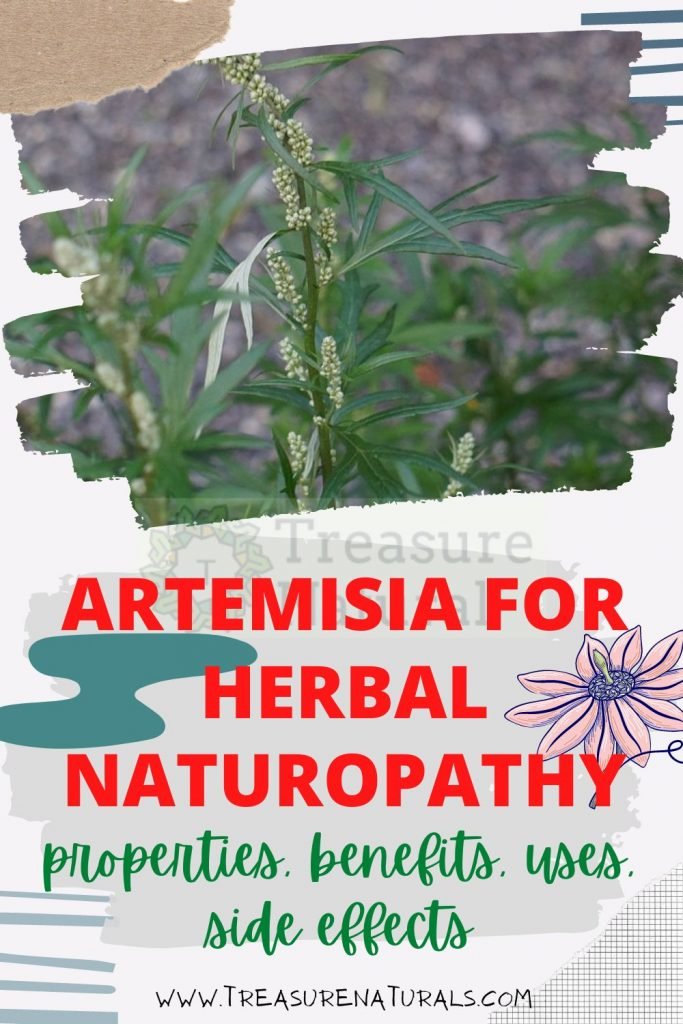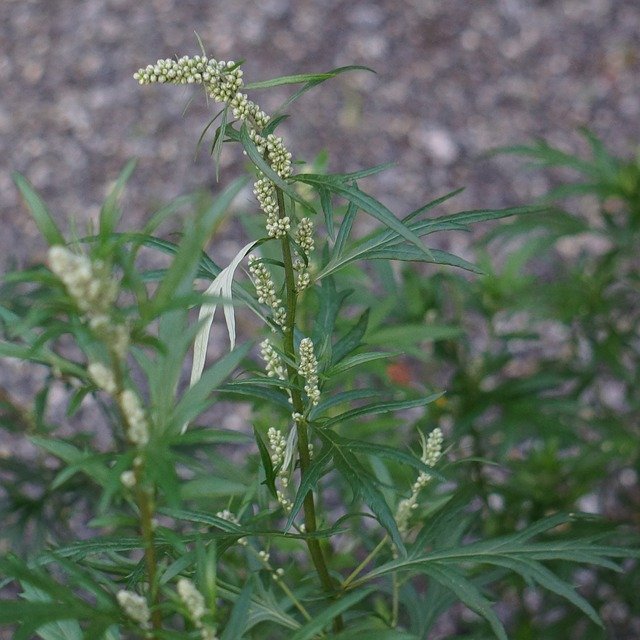
Artemisia is a plant with a bitter-tonic effect, useful especially in case of loss of appetite and digestive problems.
Artemisia (Artemisia vulgaris) is a perennial plant of the Asteraceae family, used in the past for its aromatic and digestive properties and to promote the appearance of menstruation.
What is artemisia and what is it used for
Artemisia, also known as wild worm wood, is a large perennial herb that belongs to the Asteraceae or Compositae family.
Artemisia serves above all as an antispasmodic and bitter in digestive disorders , tonic for the nervous system and emmenagogue, that is, as a useful remedy to stimulate menstrual flow.
Properties of mugwort
The tops of the mugwort are used for their content in:
- Essential oil;
- flavonoids;
- hydroxycoumarins;
- pollen;
- triterpenes;
- sterols;
- sesquiterpene lactones.
In herbal medicine and phytotherapy is also used the root of artemisia, rich in inulin.
Thanks to the presence of the active constituents just seen, artemisia boasts properties:
- Aromatic;
- bitter-tonic;
- eupeptic;
- antispasmodic;
- emmenagogues.
Benefits of mugwort
Mugwort and herbal preparations based on mugwort are useful to promote appetite and digestive functions and to stimulate menstrual flow and childbirth.
Among the benefits of artemisia we also find the hypoglycemic action of the root, appreciable effect after prolonged use of the remedy.
How to use it
To enjoy the benefits of mugwort you can use the infusion of mugwort, as well as the powder and extracts obtained from the tops(artemisia grass). On the market there is also the mother tincture of mugwort, prepared with the fresh root of the plant.
How to use
Infusion
1teaspoon of dried mugwort tops for each cup of water, to be administered three times a day.
Mother tincture
30 drops diluted in water one to three times a day.
Where to find mugwort
Artemisia products are easily found in herbal medicine. The artemisia plant commonly grows in uncultivated meadows and along roadsides throughout Italy, so it is easily found.
Differences with wormwood
The wormwood, or greater wormwood, is Artemisia absinthium. it is a perennial herb of the same family as artemisia, but characterized by the presence of tujione, a toxic molecule. The properties of wormwood are similar to those of mugwort, although the effect of this plant is stronger.
The wormwood plant is distinguished from that of artemisia by observing the flower heads and leaves: the flower heads of wormwood are pendulous and the leaves are grayish.
Side effects and contraindications
At therapeutic doses, mugwort does not present side effects but, at high dosages, it can present some side effects. In sensitive people, in addition, contact with the skin can cause dermatitis.
As for the contraindications of mugwort, this remedy should not be taken during pregnancy and in case of gastritis or gastric and duodenal ulcer.
Description of the plant
The artemisia plant is a large perennial herbaceous, with a reddish erect stem and striated 50 to 150 centimeters high and woody root.
The leaves are pinnatosette with acute-toothed segments, dark green on the upper page and whitish on the lower page.
The flowers of the mugwort are small yellow flower heads, arranged in racemes; they are very aromatic and bitter in taste.
After the flowering of the mugwort the plant produces the fruits, oblong, pointed, smooth and pappus-free hairless achenes.
In addition to the common wormwood (Artemisia vulgaris) and the greater wormwood (Artemisia absinthium) there are other species of mugwort including the qinghao (Artemisia annua) used in Chinese medicine to treat fever and malaria.
The habitat of mugwort
Native to the temperate zones of Europe, Asia and North Africa, it is also naturalized in North America. It grows from the plains to the foothills, along rivers and at the edges of fields.
Background

The name Artemisia comes from Artemis the goddess, in the religion of ancient Greece, hunting, game, woods, archery and virginity. Other denominations are wild wormwood, amarella and hemp for the vain resemblance to hemp.
According to Pliny the Elder, the name of the genus Artemisia comes from Artemis goddess, in the religion of ancient Greece, of hunting and the moon that presided over the parts, because it was considered a plant useful for women’s ailments.
Other traditions derive the name Artemisia from the Greek word artemes. which means “healthy”, “good health”. The specific term vulgaris indicates that it is a common species.
The currently accepted scientific binomial, Artemisia vulgaris,was proposed by Carl von Linné (1707 – 1778), Swedish biologist and writer, considered the father of the modern scientific classification of living organisms, in the publication “Species Plantarum“.
Artemisia is used in traditional Chinese and Japanese medicine, for the preparation of moxa (from the Japanese moe kusa which means“burning grass”),a medicine obtained by shredding the plant in a mortar to obtain a woolly dough, with which balls or cones are prepared that, once placed on specific points of the skin (corresponding to the points of acupuncture), are prepared. they are burned.
Also known as the grass “scaccia diavoli“, it was caught at the summer solstice and several popular uses and traditions attribute to the plant also antiepileptic properties.






